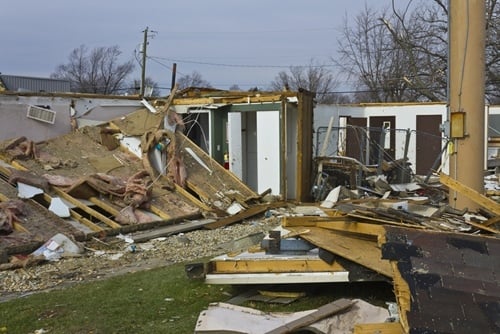The Nepalese capital of Kathmandu was rocked by a massive 7.8 magnitude earthquake on April 25, causing thousands of casualties and billions of dollars in reconstruction costs. International aid efforts have begun, but the aftershocks continuing to hit the area and an almost complete lack of infrastructure are causing severe delays.
"The lack of communication networks is making it hard for aid organizations to truly understand what help is needed."
One of the biggest problems currently stalling the relief effort is the absence of phone and Internet connections in and around Kathmandu. The lack of communication networks are making it very difficult for aid organizations to send and receive messages and get an accurate picture of the supplies needed by those most badly affected. The International Red Cross has partnered with major tech companies like Google and Facebook to introduce tools that allow users to go online to check on the people affected by the earthquake, but the large-scale power outages that have been rolling through the disaster zone are hampering the effectiveness of those efforts, and last-mile Internet connectivity problems have been a struggle as well.
In an effort to take some pressure off of relief organizations on the ground, Google deployed its Web application Person Finder which lets users post and search for information on relatives and friends missing since the disaster. Data on the effectiveness of the program was not immediately available, but about 5,000 records were being tracked by early morning on April 27. Facebook also lent a hand, activating its Safety Check tool that can trace the movement of users near a disaster area based on the city they list on their profile or the location they last used to access the Internet.
Lack of reliable communication channels slowing aid
According to Zubin Zaman, deputy director for aid agency Oxfam India, telephone links are extremely spotty and Internet speeds are very slow. Not only are connections a problem when trying to communicate over the Internet, but the lack of reliable power supplies is making it difficult for those in the area to recharge laptops and mobile devices. On April 25, the day the disaster struck Nepal, Internet performance monitoring company Dyn reported that Nepal Telecom was able to maintain the nation's global connectivity to the Internet, but the provider warned that the earthquake and the aftershocks that followed could have an affect on last-mile connectivity.
"We can see that Nepal Telecom has maintained its connection to the global Internet," Doug Madory, director of Internet analysis for Dyn, said in an interview with IDG News Service. "Having said that, the destruction from the earthquake will likely have had impact on 'last mile' connectivity that is more difficult for us to observe."
There are so many challenges with rebuilding after a natural disaster, communication shouldn't be one of them. The summer months are right around the corner, and with them comes extreme weather like tornadoes and hurricanes that can destroy power lines and data centers in the blink of an eye, wiping out communication networks as they go. For businesses that rely on cloud-based systems for their phones, it simply isn't an option to be without a reliable connection. To ensure lines of communication are always intact, relying on a geo-redundant data center system with failover solutions in place is the most reliable course of action. If something happens to one facility, the functions and processes can immediately be switched to the servers in a different site far away from the destruction so lines of communication are always open.

